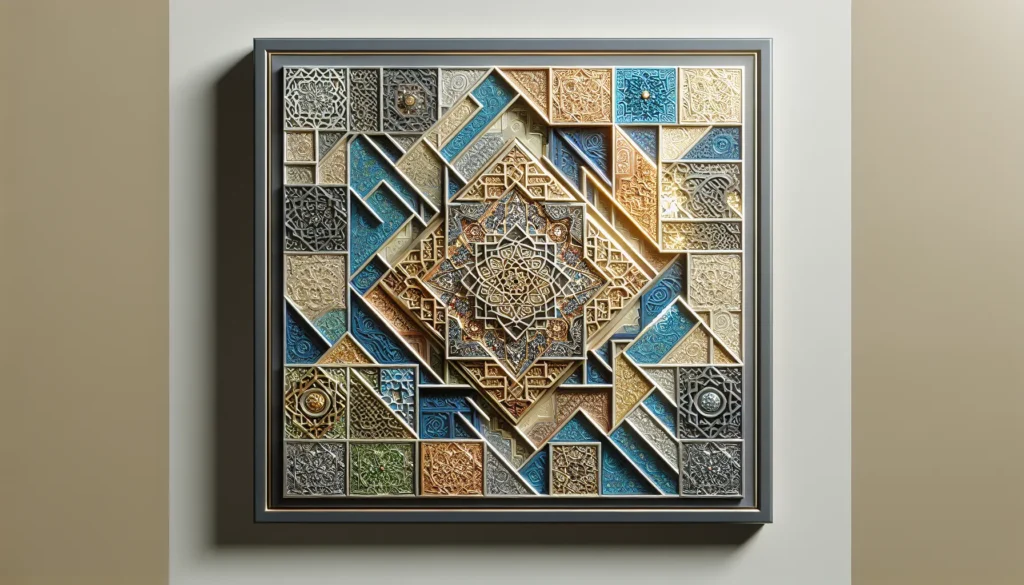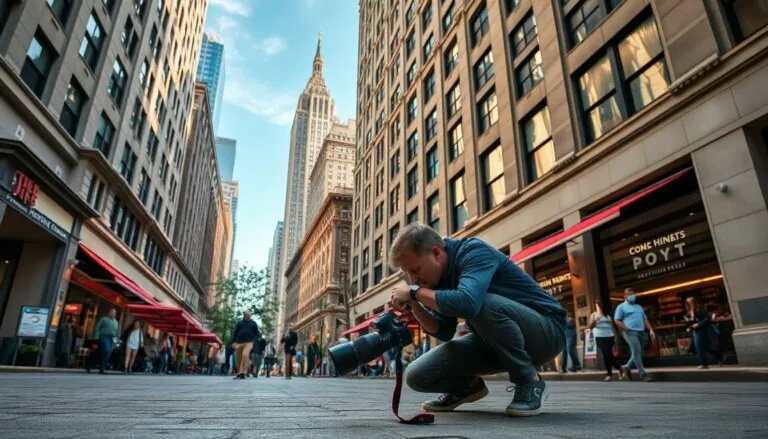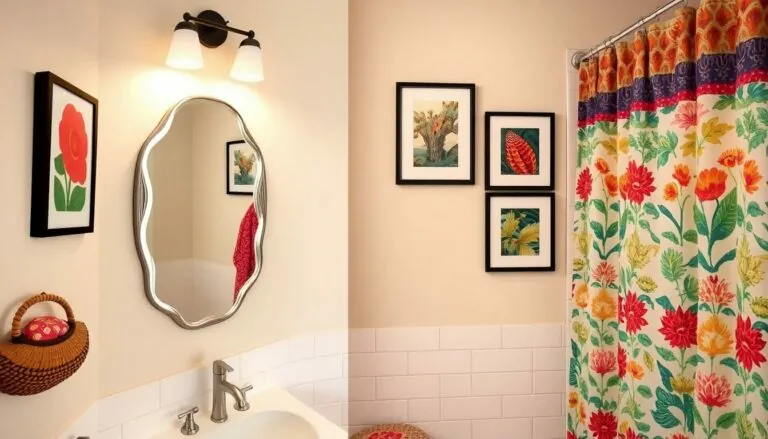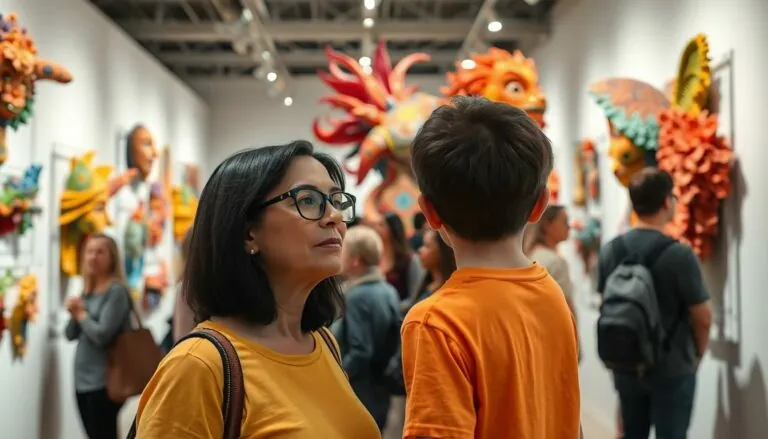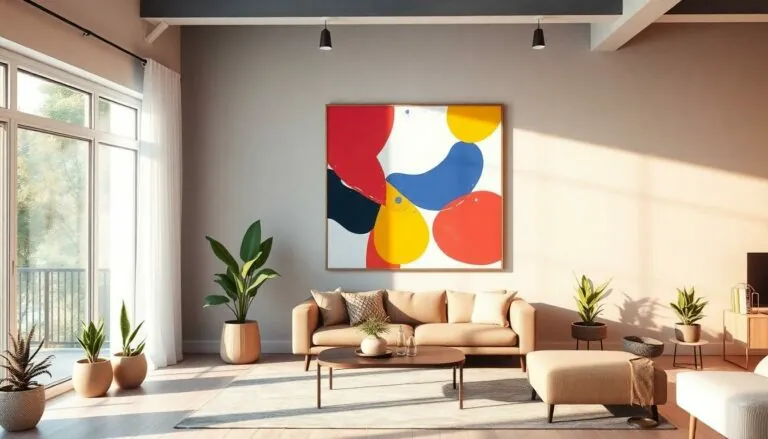Table of Contents
ToggleIn a world where bland walls are a cry for help, modern Islamic wall art swoops in like a superhero, ready to rescue any space from the clutches of dullness. It’s not just about aesthetics; it’s about weaving rich cultural narratives into the very fabric of home décor. Imagine vibrant colors and intricate designs that spark conversations and elevate moods—who wouldn’t want that?
This art form blends tradition with contemporary flair, making it the perfect choice for those who want to showcase their heritage while keeping things fresh and stylish. Whether it’s a stunning calligraphy piece or a geometric masterpiece, modern Islamic wall art has the power to transform any room into a sanctuary of beauty and inspiration. So, let’s dive into the world of modern Islamic wall art and discover how it can breathe life into those uninspiring walls.
What Is Modern Islamic Wall Art?
Modern Islamic wall art represents a contemporary expression of traditional Islamic designs. This art form incorporates geometric patterns, calligraphy, and motifs inspired by nature, integrating historical symbolism with modern aesthetics. Artists utilize vibrant colors and diverse materials to craft pieces that resonate with both current trends and spiritual themes.
These artworks often redefine home décor by introducing a unique fusion of cultural heritage and modern design elements. Through various mediums like canvas prints, metal wall art, and even murals, modern Islamic wall art provides flexibility in decorating spaces. They can serve as focal points that bring warmth and inspiration to living areas or offices.
Crafting modern Islamic wall art involves a deep appreciation for Islamic culture and the innovative adaptation of age-old techniques. This results in pieces that not only beautify spaces but also stimulate conversations about culture and faith. For instance, a canvas featuring Arabic calligraphy can convey profound messages while enhancing the visual appeal of a room.
Significantly, modern Islamic wall art appeals to a global audience. Individuals from various backgrounds find its blend of tradition and contemporary style refreshing. As home décor trends evolve, this art form offers endless possibilities for personal expression, making it a popular choice for many.
Incorporating modern Islamic wall art into a home signifies more than just aesthetic enhancement. It celebrates cultural identity and transforms ordinary walls into inspiring environments that reflect meaningful narratives.
Key Characteristics of Modern Islamic Wall Art
Modern Islamic wall art showcases unique artistic features that distinguish it from traditional forms. Its vibrant expressions and cultural richness captivate audiences worldwide, emphasizing both aesthetics and meaning.
Use of Calligraphy
Calligraphy holds a central role in modern Islamic wall art. Artists often utilize Arabic scripts that convey spiritual messages and profound meanings. Styles like Thuluth and Diwani lend elegance to compositions, transforming text into visually striking elements. Secular themes merge with spiritual lessons, captivating the viewer’s attention. Artists play with scale and placement to enhance the impact of calligraphic elements, infusing artworks with an air of sophistication and depth.
Integration of Geometric Patterns
Geometric patterns reflect the essence of Islamic art found in historical architecture. Modern interpretations incorporate complex shapes and lines, creating visually stimulating designs. Artists embrace symmetry and repetition, adding a sense of order and harmony to installations. Combining traditional motifs with contemporary art techniques fosters innovation while honoring cultural heritage. Each piece draws the viewer in, inviting exploration through intricate arrangements that emphasize beauty and balance.
Color Palettes and Material Choice
Color palettes in modern Islamic wall art range from bold and vibrant to soft and muted tones. Artists often choose colors intentionally to evoke specific emotions and enhance spaces. Materials used in these artworks include canvas, wood, metal, and ceramic, allowing for diverse textures and finishes. By blending traditional materials with modern techniques, artists create fresh aesthetics that resonate with today’s audiences. This thoughtful selection of color and material enriches the visual experience, making each piece a unique reflection of contemporary Islamic culture.
Popular Styles and Trends
Modern Islamic wall art features various styles and trends that reflect both heritage and contemporary design. From geometric patterns to intricate calligraphy, artists create stunning pieces that appeal to diverse audiences.
Contemporary Artists in Modern Islamic Wall Art
Renowned artists infuse modern themes into traditional Islamic art. Established names include eL Seed, whose work highlights the beauty of Arabic calligraphy intertwined with street art. Another artist, Shahidul Alam, combines visual storytelling and cultural narratives in his pieces, emphasizing socio-political themes. Emerging talents also contribute fresh perspectives, incorporating digital elements while honoring traditional techniques. Their collective influence enriches the modern Islamic art scene, prompting discussions around culture and identity.
Digital and Traditional Techniques
Artists blend digital and traditional techniques to produce unique wall art. While digital tools allow for precise design, traditional methods like hand-painting ensure authenticity. Many creators utilize software for layout and planning but return to manual brushwork for details. This synergy results in art pieces that resonate with contemporary tastes while preserving cultural significance. The coexistence of these methods reflects a dynamic approach, appealing to modern viewers and collectors. Overall, the combination enhances the depth and richness of modern Islamic wall art.
How to Incorporate Modern Islamic Wall Art in Your Space
Incorporating modern Islamic wall art into a space enhances both aesthetics and cultural identity. Start by selecting a focal point for a piece that draws attention, such as above a sofa or a prominent wall. Choose art that aligns with existing color schemes to create harmony within the room.
Group smaller pieces together to form a gallery wall, allowing different styles and patterns to complement each other while maintaining a cohesive theme. Coordinate geometric designs with textiles or furniture that feature similar shapes to establish unity in design.
Use calligraphy art that conveys meaningful messages to add a spiritual touch. Position these pieces in areas where they can inspire reflection, such as in home offices or meditation spaces.
Consider multiple mediums when choosing wall art. Canvas prints provide versatility, while murals offer immersive experiences. Invest in framed pieces to protect artworks and elevate their appearance.
Mix contemporary designs with traditional artwork to create a balanced and dynamic display. Incorporate natural elements, like plants or wooden shelves, to soften the look and connect to nature.
Lighting plays an essential role in showcasing the beauty of modern Islamic art. Utilize spotlighting or wall sconces to highlight individual pieces and bring out vibrant colors.
Finally, don’t hesitate to rotate artworks periodically to keep the space feeling fresh and interesting. This practice invites new inspirations and encourages ongoing appreciation for the art form.
Modern Islamic wall art isn’t just a decorative choice; it’s a celebration of cultural identity and artistic expression. By blending traditional elements with contemporary styles, it transforms spaces into reflections of heritage and inspiration.
Whether through stunning calligraphy or intricate geometric designs, these artworks invite viewers to engage with their rich narratives. The flexibility in styles and mediums allows for personal expression in any setting, making it accessible to diverse audiences.
Incorporating modern Islamic wall art into home décor elevates aesthetics while fostering a deeper appreciation for cultural stories. It serves as a reminder that art can bridge the gap between tradition and modernity, enriching lives in meaningful ways.

